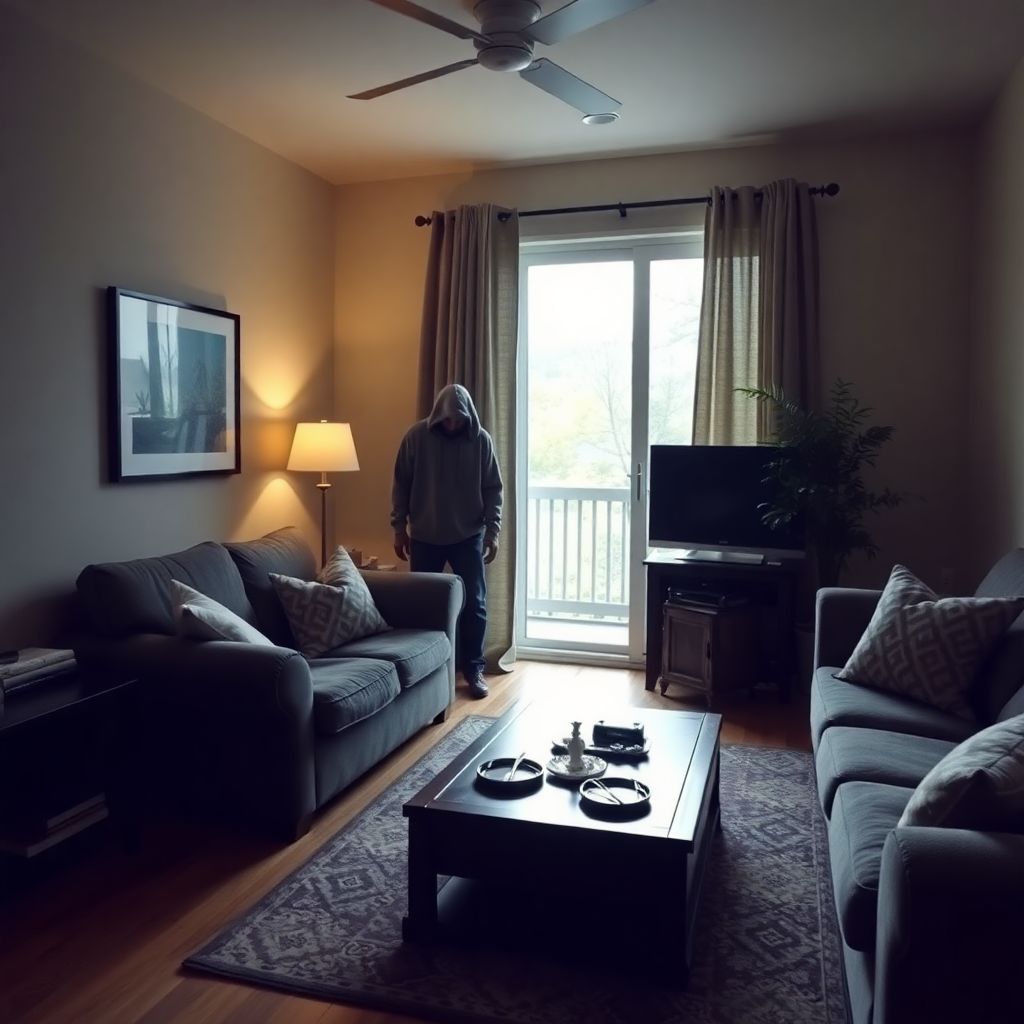A new wave of viral pranks driven by artificial intelligence has sparked widespread concern across the United States, as AI-generated images depicting a supposed “homeless man” inside people’s homes have triggered emergency calls and alarmed both residents and law enforcement.
The prank, primarily circulating on platforms like TikTok, uses photorealistic AI-generated images to make it appear as though a disheveled stranger is lurking in someone’s living room or bedroom. Often accompanied by captions implying that the intruder is real, these images have led recipients to believe they are witnessing a live security feed or a hidden camera snapshot. The fear these fabricated scenarios incite has proven to be more than a mere joke.
Police departments from Massachusetts to Texas have issued public warnings about the trend, emphasizing its potential to cause panic and divert critical emergency resources. In a statement released by the Salem Police Department in Massachusetts, officials criticized the prank as “not only tasteless but also reckless,” noting that multiple individuals genuinely believed their homes had been breached. These panicked reactions led to a surge in 911 calls, each requiring immediate police intervention.
In Round Rock, Texas, a suburb of Austin, law enforcement responded to a string of emergency calls linked directly to the AI-generated prank. Officers were dispatched to residences under the impression that real break-ins were underway. This not only put undue pressure on local police resources but also increased the risk of unnecessary confrontations.
The underlying technology behind the prank leverages powerful AI tools capable of generating hyper-realistic imagery. With just a few prompts, users can create visual content that mimics real-life photos with uncanny accuracy. While these tools have legitimate applications in art, design, and entertainment, their misuse is becoming increasingly problematic.
What makes this prank particularly dangerous is the emotional manipulation involved. The fabricated images exploit common fears—such as home invasion or vulnerability while alone—and turn them into a source of entertainment for some, while causing genuine distress for others. Mental health experts warn that even brief exposure to such startling content can trigger anxiety, especially for individuals with past trauma or heightened sensitivity to safety threats.
From a legal standpoint, the prank walks a thin line. Though creating and sharing AI-generated images is not illegal in itself, using them in a way that incites public panic or prompts emergency response could fall under false reporting or public mischief statutes. Legal experts suggest that as AI-generated content becomes more pervasive, regulatory frameworks will need to evolve to address misuse like this.
The speed at which misinformation spreads on social media further adds to the issue. The AI prank gained traction within days, racking up millions of views and shares before authorities could respond. Unlike traditional hoaxes, which might require physical props or elaborate setups, AI content can be generated and disseminated instantly, with minimal effort or technical skill.
In response to the trend, some social media platforms are cracking down on posts that promote fear or spread misleading content. However, enforcement remains inconsistent, and many clips continue to circulate unchecked. Users who participate in the prank often defend it as “just a joke,” downplaying the consequences. But for those on the receiving end, the experience is far from amusing.
Parents and educators are also raising concerns about the psychological impact of such pranks on children and teenagers. With younger audiences particularly active on platforms like TikTok, there’s a growing fear that exposure to this type of content may normalize fear-based humor or desensitize viewers to real-world emergencies.
Moreover, the incident raises broader questions about the ethical responsibilities of AI developers and content creators. Should there be built-in safeguards to prevent the generation of potentially harmful scenarios? Should AI-generated images be watermarked or labeled to prevent confusion? These are pressing issues as synthetic media becomes more prevalent.
Looking ahead, experts advise users to remain skeptical of sensational content, especially when it appears to depict high-stakes situations without context. Verifying sources, cross-checking with reliable news outlets, and avoiding knee-jerk reactions to shocking images can help curb the spread of AI-driven misinformation.
In the meantime, law enforcement agencies continue to monitor the situation and urge the public to report any suspicious or misleading content. They also remind individuals that while technology can be a tool for creativity, it must be wielded responsibly—especially when public safety is on the line.
As artificial intelligence continues to blur the lines between reality and fabrication, society faces a new set of challenges. The viral “homeless man in your house” prank is just the latest example of how powerful—and potentially harmful—these tools can be in the wrong hands.

